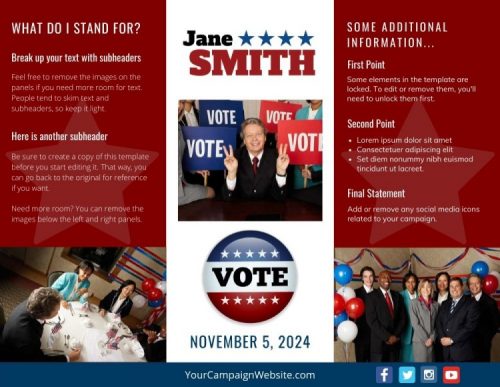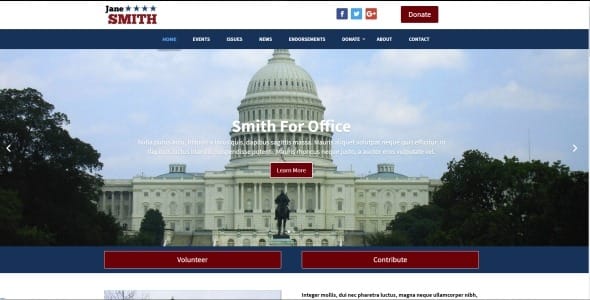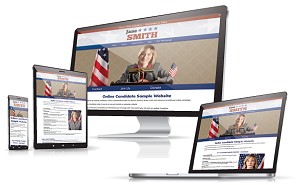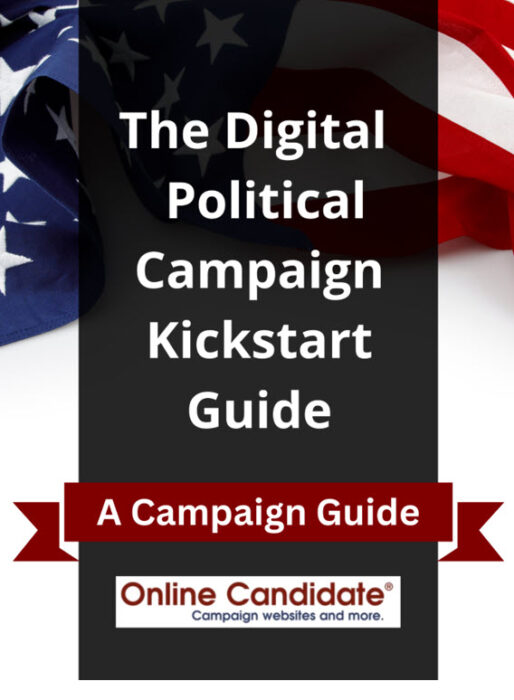For political purposes, your campaign theme covers a variety of elements which are used to communicate a political message. It should be based on a clear reason why a candidate is running for office and backed up by an overall identity that shapes the overall campaign.
The end goal, of course, is to convince people to vote for you.
Listen to this post:
Why are you running for office?
You should be able to summarize your campaign’s main message or narrative into a concise statement that explains why voters should support your campaign, organization or political party. The message should be short enough to not only tell a story, but also to be broken down and used as talking points that can be used by a candidate over and over again.
So, what is a political theme? For your messaging, it’s a summary of why you are seeking office.
For more of an idea, here are some campaign message examples:
- “As we face fiscal woes and a decaying infrastructure, we need leaders who will restore fiscal accountability and help rebuild our state. John Smith is that leader.”
- “Jane Smith is a former teacher and administrator, not a well-connected politician. Her background in education means she can restore accountability to our local schools.”
- “Ian Incumbent has missed over half of the Town Board meetings over the last two years. How can he govern if he doesn’t even do his job? Jane Smith will be there and work hard for the taxpayers.”
- “Our town board is indifferent to citizen needs over outside developers. John Smith will work for sustainable growth.”
- “Colin Candidate is running for judge to insure impartial and fair justice for all.”
All these examples touch on an important issue to voters and what the candidate is going to do when elected. From the examples above, you can extract the major theme in just a few words. As you refine this, it will become your elevator speech and the basis for your candidate stump speech.
Your messaging should reflect and promote that idea throughout the campaign. In one form or another, your message should be repeated at every opportunity, in every available medium.
Why are you seeking elected office? The answer is what you hope to accomplish when you win.
[bctt tweet=”Your campaign’s main message should be a concise statement that explains why #voters should support you.”]
Your campaign theme should appeal to voter emotions
If your theme can play on voter emotions, it can become far more powerful. What are the wants and needs of your community? Education? Jobs? The economy?
- Know the issues and interests of your target voter. You can find this out through public meetings, newspapers and just speaking with people. Learn how your solutions contrast with those of your opponent.
- Show you can relate to and feel your target voter’s pain. Political themes that can tie both a problem and a proposed solution together is a powerful message.
- Most people vote on emotion, not logic. Tap into and create a memorable emotion that gives voters feelings about you and what you hope to accomplish.
It’s emotion that makes political ads so powerful. In a 2005 American Journal of Political Science study, it was found that emotional reactions occur faster than conscious appraisals. This is why negative political advertising is so persuasive – because it works. This isn’t to say that your campaign should be based on negatives, but perhaps how you couch your issues can influence voter’s emotional reaction and participation.
All of your campaign communication – speeches, print material, signage – should reinforce your theme and the feelings they produce. Your campaign message should show that you share a voter’s values. This helps them identify with you and builds trust.
Your campaign slogan – an extension of you
While a summary of your campaign is great and should be practiced until it can be recited in your sleep, the average voter needs something even shorter. They need a slogan that encapsulates the idea of your campaign.
Your slogan should touch on the major issue or reason for your campaign. Examples of this includes:
- Let’s Make a Difference
- A Voice for Smart Growth
- Proven Leadership.
- Quality in Government
- Fair and Impartial Justice
Your campaign slogan should be related to your message. For example, if you are running an anti-sprawl campaign, a slogan like ‘A Voice for Smart Growth‘ would be appropriate. It’s short, it fits on a campaign sign (if it had to) and is related to a major campaign issue.
[bctt tweet=”Your #political campaign slogan should encapsulate your entire campaign. http://ow.ly/McUq30gBjnT”]
What’s your color theme?
It’s usually best to keep your campaign color scheme to two colors, one lighter and one darker. Simple is best. That goes for your fonts, as well. A nice sans-serif font is better than a fancy script font. Most political organizations tend to use sans-serif fonts for their boldness and readability.
What colors are you going to use to promote your campaign? In the US, red, white and blue are always favorites, but if you were running on environmental issues, perhaps green and white might be a better scheme.
There is a bit of science behind color and how it makes people feel.
- Red often indicates excitement or danger. This color corresponds to the Republican party.
- Blue indicates peace and tranquility. This color corresponds to the Democratic party.
- Green indicates life and growth. This color is used by, yes, the Green Party and often by independent candidates.
- Orange is often interpreted for innovation and creativity.

All of your print materials should match your color scheme.
Whatever you do, once you commit to a color theme and slogan, stick with them. Switching things up halfway through election season will only dilute your brand and confuse voters.
What about your website?
Your online presence – your political campaign website, social media profiles and online advertising – should all match in look and feel. You will want to use the right tools to build your website. A good design should have colors and fonts that match your offline signage. The look of your site should tie together the position you are running for or the major issue behind your election.

The colors of your website design should match your print and sign material.
Hammer that campaign theme home to voters
At this point, your political campaign theme is well on its way. You have a message, a slogan, and a general design scheme. From here on in, it’s a matter of combining and using these elements consistently though your campaign literature, TV and radio ads, signage and your campaign website. Hammer that messaging home so every voter can easily recall what you stand for, and why they should vote for you on Election Day.
Our online store carries Campaign Letter Templates, and Campaign Brochure Templates – or save with a Digital Combo Package.
« A Sample of Our Best Political Website DesignsAnnouncing Your Candidacy for Political Office »
Tags: messaging, personal branding







